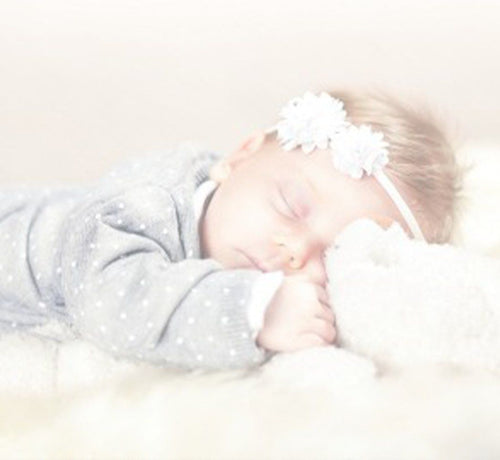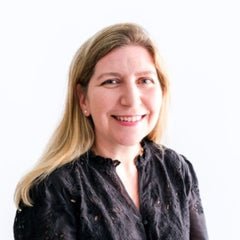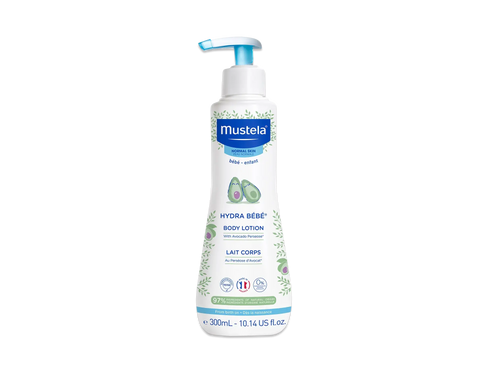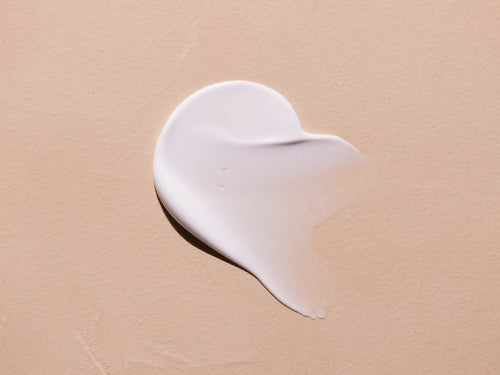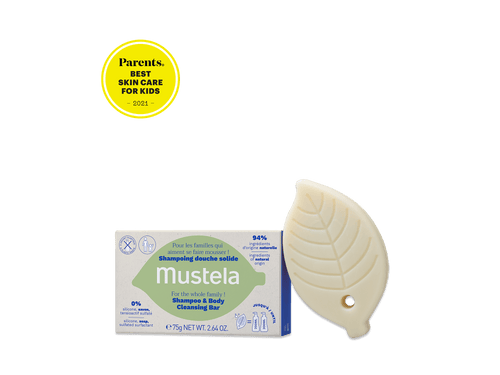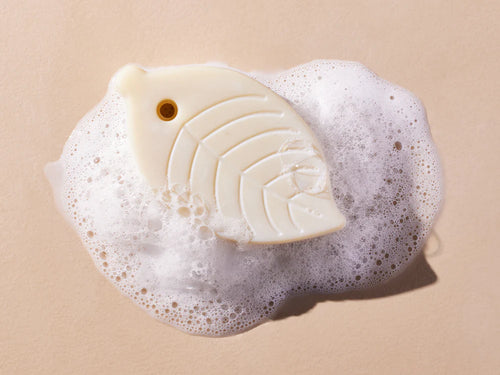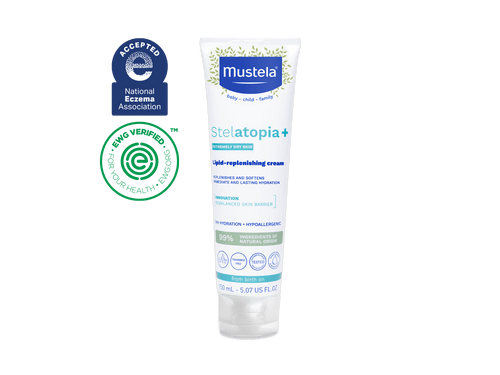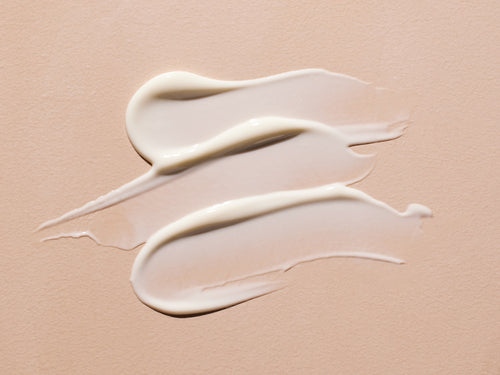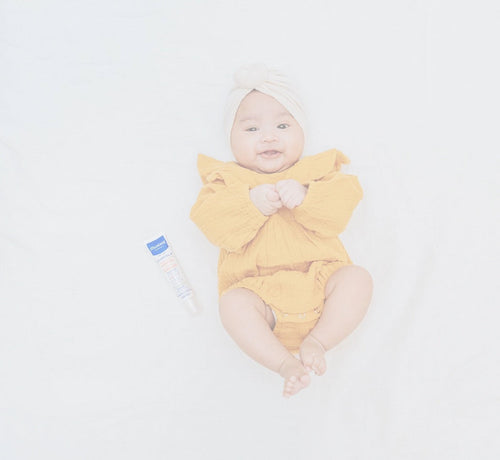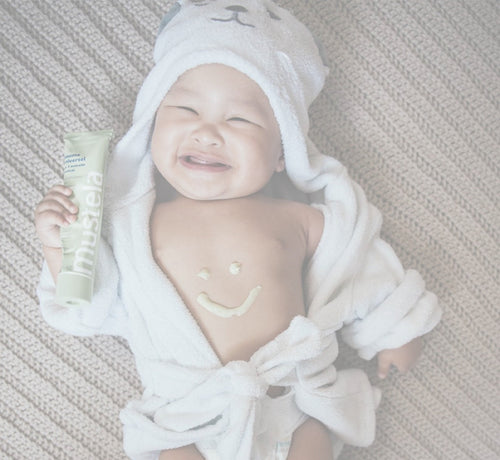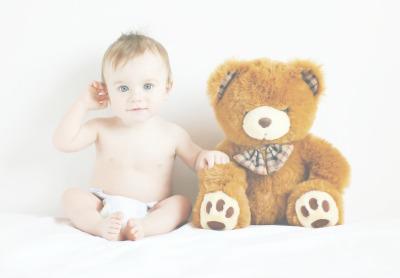As a parent, you love your baby unconditionally. It doesn’t matter whether they have a full head of baby hair or don’t have a hair on their head!
While you don’t care what your little one has — or doesn’t have — on top of their head, you might still have a few questions about your baby’s hair. This is completely understandable, as it can be hard to know what’s normal and healthy as a new parent. For example, some babies are born as bald as can be, while others are born with a bushy hairdo.
In this post, the baby experts at Mustela will explain everything you need to know about baby hair care. This post will address the following questions:
- Why are some newborns born with baby hair?
- Why do babies lose their hair?
- When will your baby’s permanent hair begin to grow?
- Why is your baby’s hair changing color?
- What’s the best way to wash your baby’s hair?
- What is cradle cap?
- When should you cut your baby’s hair?
The answers will provide all the info you need to take extra special care of your little bundle of joy.
Why Are Some Children Born With Baby Hair?
There are a few reasons why some babies are born with hair while others are not. The first cause is genetics. Your and your partner’s DNA is the number one factor in determining your baby’s hair — the color, style, and, of course, whether or not your little one had hair at birth.
A second reason why some babies have hair at birth is exposure to a high level of hormones. While all women experience a boost in hormones during pregnancy, some women’s hormone levels are comparatively higher than others. This causes an increase in the amount of hormones a baby is exposed to in the womb and can lead to a child being born with hair.
Ultimately, the most important thing to know about baby hair is that pretty much everything is normal. Bald babies and hairy babies alike, as well as everything in between, are considered typical and healthy.
Why Do Babies Lose Their Hair?
It’s perfectly normal for your baby to lose the hair they had when they came out into the world — be it a little or a lot — several weeks or months after birth. In fact, most infants will go through a stage of hair loss. It’s nothing to be concerned about.
So why does this loss of baby hair take place? Well, to begin with, all babies grow a thin layer of hair while in the womb. This wispy layer of baby hair is called lanugo and appears all over a baby’s body. The purpose of lanugo is to protect your little one’s delicate skin from the amniotic fluid in which they are submerged while in utero.
Most of the time, a baby will shed their lanugo while in the womb. Lanugo appears sometime around the 16th week of gestation and ordinarily falls off between weeks 32 and 36. However, this is not always the case. Some babies are born with lanugo all over their body. While this is slightly uncommon, it is not a health concern.
After your baby was born, they stopped receiving hormones from your body. This led to a dramatic decrease in their hormone levels, which in turn causes their baby hair to fall out. This means all of your baby’s hair — whether it’s the hair on their head or the lanugo on their body — will fall out in the first four to six months of life.
Another factor that plays a role in your baby’s hair loss is the fact that they spend so much time on their backs. Your little one is on their back for at least the 14 to 16 hours they spend sleeping every day. (It’s extremely important for your child's safety to always put your baby down to sleep on their back. Never mind the bald spots!)
If bald spots appear on the back of your little one’s head, it’s nothing to worry about. These are a normal effect from your baby spending so much time with the back of their head against various surfaces. Try to give your little one plenty of tummy time, and hold your baby in a carrier whenever possible.

When Will Your Baby’s Permanent Hair Begin To Grow?
After your baby has gone through the initial period of hair loss, a new type of hair will grow in. Once all the lanugo has fallen off, your baby will grow a thin, light-colored layer of hair on their body called vellus hair. They will also grow a new head of hair, which they will likely keep throughout childhood.
Your baby’s permanent hair will likely begin to appear around the six-month mark. However, your little one may grow their childhood hair as early as three months or as late as 18 months. Every child is different. It’s considered healthy and normal for babies to grow their big-kid hair any time before two years of age.

Why Is Your Baby’s Hair Changing Color?
It’s very common for a baby’s hair to change in color, thickness, and style as they grow through the first year or two of life. Sometimes, these changes continue all the way through childhood and even adolescence.
You’re probably familiar with this phenomenon. Some babies are born with beautiful curly locks only to have their hair straighten out as they grow a little older. Others are blonde in their early years but turn brunette with time. All of this is perfectly normal.
So why do these changes in baby hair occur? The primary cause, like much of what goes on with your little one’s physical appearance, is genetics. A second prominent cause is hormones.
Remember how much your hormones affected your appearance when you were a teenager? The same sort of thing is happening with your baby. Your little one is developing and balancing their own hormones, which can cause their hair to change.
What’s The Best Way To Wash Your Baby’s Hair?

Washing your baby’s hair is more or less the same as washing your own, with a few small differences. Follow these six steps when washing your little one’s hair and scalp.
1) Prepare A Bath
First things first, you’ll need to prepare a warm bath of approximately 98 degrees Fahrenheit (give or take a few degrees). The temperature can be measured with a thermometer, or you can test the temperature yourself by dipping your wrist in the water.
How full should the baby bath be? It depends on how old your baby is. Tiny newborns, for example, don’t need more than two or three inches of water.
In addition to running the bath, make sure that you bring all of the bathing supplies that you’ll need before putting your baby in the water. Think baby shampoo, cleansing gel, a washcloth, a bath towel, a small cup for rinsing, and anything else you typically use.
Gathering these supplies ahead of time is essential since you should never leave your little one alone in the water. If you did forget something or the doorbell rings, wrap them in a towel and bring them with you.
2) Support Your Baby’s Head And Neck
Put your naked baby in the bath and hold your hand firmly behind your baby’s head to support their head and neck.
3) Wet Their Hair And Scalp
Before applying baby shampoo, wet your baby’s hair and scalp. Using a small cup, gently pour water over their head. Shield your little one’s eyes to avoid them getting an unpleasant faceful of water!
4) Lather Up
Now, you’ll lather their scalp (hair or no hair!) with a gentle baby shampoo. The key is to use a shampoo that won’t irritate your baby’s skin and will deliver skin-soothing nutrients instead.
We recommend Mustela’s Gentle Shampoo, Foam Shampoo For Newborns, or Stelatopia Foam Shampoo.
Gentle Shampoo
A tear-free formula, Gentle Shampoo cleans without stripping your baby’s skin of its natural oils.
And it’s composed of 93% plant-based ingredients like chamomile extract to soften and detangle and avocado perseose, a patented natural ingredient specifically designed to help protect and hydrate your little one’s scalp.
Foam Shampoo For Newborns
Meanwhile, Foam Shampoo For Newborns is — you guessed it! — designed specifically for newborns. This fragrance-free shampoo is made of 99% naturally-derived ingredients and, like all Mustela products, is free of parabens, phthalates, and phenoxyethanol.
Plus, this baby shampoo is designed to minimize cradle cap flakes. More on that later.
Stelatopia Foam Shampoo
For babies with eczema-prone skin, go with Stelatopia Foam Shampoo, which is part of our Eczema Care line and is made to soothe, moisturize, protect, and strengthen your baby’s skin.
It’s fragrance-free, pH-balanced, recognized by the National Eczema Association, and clinically tested on eczema-prone skin under pediatric and dermatological control.
Assuming that you’re giving your baby a full bath rather than only washing their hair, you’ll also wash their body with a cleanser like Mustela’s Gentle Cleansing Gel.
5) Rinse
Now, all that’s left is to wash the shampoo away! Carefully rinse the shampoo from your baby’s head with your hand or a small cup.
Don’t forget that even with newborns who aren’t interested in playing in the bathtub, bathtime is a great time to bond with your little one, narrate what you’re doing, and generally enjoy time with them.
6) Dry Your Baby

Last but not least, dry your baby’s hair as soon as you’re finished washing it. Take your wet, slippery little one out of the tub and wrap them in a warm towel. To avoid irritating sensitive or eczema-prone skin, pat their skin dry instead of rubbing.
This is also a perfect time to apply baby lotion or give your little one a baby massage. Use Mustela’s Stelatopia Emollient Cream for eczema-prone skin or Hydra Bebe Body Lotion for normal skin.
Hydra Bebe Body Lotion is non-greasy yet provides immediate as well as long-lasting moisture with jojoba oil, sunflower oil, and Vitamins E and F.
Or, if you are looking for an EWG Verified, organic option, look no further than our Certified Organic Hydrating Cream with Olive Oil and Aloe, which is ideal for the whole family from little ones to adults.
This product is designed to be good for the earth, too. Environmentally conscious inside and out, the packaging is made from sustainably sourced sugar cane, and we’ve done away with secondary cartons.

That’s all there is to it! Washing baby hair isn’t too tough of a task. Here are a few additional tips to know:
- Shampooing your little one’s head is necessary even if they do not have any baby hair.
- You only need to wash your baby’s hair two or three times per week. Shampooing doesn’t need to be part of your baby’s daily hygiene routine.
- Always be extremely gentle when lathering shampoo on your baby’s head. This is especially important if your little one has cradle cap or eczema.
- Make sure to dress your little one warmly after their bath.
- If your baby’s hair is long enough, give it a quick comb or brush after the bath. (Expert tip.
- Use our Hair Styler & Skin Freshener to easily style your little one’s hair in-between baths.
Follow the steps and tips above to keep your baby’s hair and scalp healthy.
What Is Cradle Cap?
We mentioned the need to be gentle when shampooing your baby’s head, especially if they have a condition like cradle cap. Before we move on, we’d like to go over the basics of cradle cap since it’s a common condition.
And, since it can look a bit like baby dandruff, it may be one of the baby hair care concerns that you have.
First of all, sometimes it can be hard to tell the difference between dry scalp and cradle cap. If you’re not sure exactly which one is plaguing your baby’s skin, read our article here. For now, we’ll focus on cradle cap.
Seborrheic dermatitis is the scientific name for cradle cap and, simply put, it shows up as patches of irritated, oily, red, or yellow skin. These areas of skin can be discolored and scaly or crusty. While there are varying degrees of cradle cap, sometimes it looks like baby dandruff.
This sounds unpleasant, but don’t be alarmed! It’s harmless, not contagious, and absolutely no reflection on you as a parent and your baby’s hygiene. And, it typically goes away by the time your baby turns one.
The names “cradle cap” and “dandruff” would indicate that this condition strikes on your baby’s scalp, leaving flakes in their hair. This is true, and it’s the primary area where cradle cap rears its head. But you may also see this flaky-skin condition on other parts of your baby’s body.
Not much is known about what causes cradle cap. It’s still a bit of a mystery. But there are still several steps you can take to help to prevent and treat this condition.
Preventing, Treating, And Caring For Cradle Cap
First of all, it’s important to help their skin stay as moisturized as possible. To help curb cradle cap, don’t bathe your baby too often (no more than once a day tops) and keep baths short to avoid drying out your baby’s skin.
Side note: If you’re not sure how to go about bathing your delicate newborn, read about it here.
Another way to care for cradle cap skin? Opt for products that are designed specifically for this condition.
Here at Mustela, we’ve created a special cream and foam shampoo with cradle cap in mind! The Foam Shampoo for Newborns that we mentioned earlier is what we recommend for shampooing scalps with this condition. The key is the cream afterward.
Mustela’s Cradle Cap Cream works to safely and effectively reduce cradle cap flakes and scales and leaves your baby’s scalp smooth, supple, and comfortable.
This fragrance-free cream is made with 95% naturally-derived ingredients including avocado polyphenols® to soften scalp flakes, sunflower oil Distillate® to soothe the skin, and galactoarabinan (an extract from the Larch tree) to keep your baby’s scalp clean and moisturized.
Backed by scientific research, Cradle Cap Cream was developed with healthcare professionals and is proven to be safe for use from birth on, meaning it’s okay to use on your newborn’s cradle cap. And, rest assured that it’s free of parabens, phthalates, and phenoxyethanol.
Simply apply this cream once a day to the affected area by massaging it in lightly and, if possible, leave it on overnight.
Talk With Your Pediatrician
All of that said, if you have concerns about your baby’s skin, or it seems that their cradle cap may be getting infected, don’t hesitate to contact your pediatrician. For more details on the causes of cradle cap and how to treat and prevent it, click here.
Next, and last, we’ll cover a very exciting baby hair care topic: your little one’s very first haircut!
When Should You Cut Your Baby’s Hair?
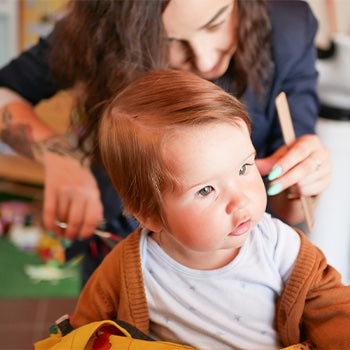
If your baby’s hair is growing long, you may be wondering when to give your little one their first haircut. The answer is: whenever you want! There’s no right or wrong time to give your little one a trim.
With that said, it’s worth taking into consideration how temperamental babies can be. You might want to put your baby’s first haircut off until it’s totally necessary. New situations can be frightening for your baby.
If you decide to give your little one a new ‘do, start the haircut while your baby is well-rested. You should also feed them right before the trimming begins. Your baby is much less likely to be squirmy and cranky when they’re rested and have a full tummy.
And, of course, be careful while cutting. Your baby has extremely delicate, sensitive skin, so you don’t want any mishaps with the scissors. Safety first!
Simple, Natural Baby Hair Care
There’s not too much to baby hair care. And now that you’ve read about baby hair loss, hair color, how to wash your baby’s hair (or scalp), and what to do about cradle cap, you’re ready to tackle this aspect of caring for a tiny human.
When it’s bath time, shampoo their sweet head with Mustela’s Gentle Shampoo, Foam Shampoo For Newborns, or Stelatopia Foam Shampoo to keep their hair and scalp clean and soothed.
Whether your little one has a full head of hair or is completely bald, just remember to follow the other tips in this article, take lots of photos at every stage, and pile on the hugs and kisses!



